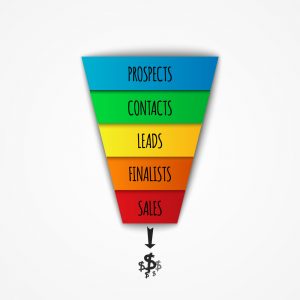The CRM and marketing automation slippery slope sneaks up on you quickly. Here’s an example…
Alicia’s business is experiencing a period of growth. She feels the need to better understand her customers and increase efficiency, so, she invests in top-of-the-line CRM software.
The implementation is successful but she suddenly realizes the CRM requires an automation component as it doesn’t automate nearly enough stuff. To overcome her issues with repetitive tasks, Alicia invests in a marketing automation program.
Now, she is stuck with two different systems that are almost ending up unused. They are not working as expected and she is clearly frustrated. She has to manually update data in both systems and just cannot get them in sync. Her marketing and sales efforts are scattered and her bottom line is in serious trouble.
Can you relate to the scenario above? Like Alicia are you having issues using separate CRM and marketing automation solutions? These three challenges may arise as a result:
Challenges of Using Separate CRM and Marketing Automation Systems
Getting the two systems to move data back and forth can be difficult and require hiring outside professionals.
When a “marketing qualified” lead is handed off to sales, one of the most common results is that the lead is passive or indicates they are not ready to buy right away.
Marketing Sherpa says 73% of all marketing leads are not “Sales Ready”.
Such a lead ought to be moved back to the Marketing Automation queue for nurturing but, this must be done manually by an administrator who often doesn’t.
Leads receive irrelevant messages
Even though “marketing qualified” leads can go through a lead nurturing process, the difficulty in updating the Marketing Automation with insights acquired during the sales process often prevents this from happening. This leads to a situation where leads all get the same campaigns even when sales learns about specific needs that make these messages irrelevant.
Lack of accurate ROI analysis
Lack of tracking of actual sales data that is moved back into the Marketing Automation system prevents any accurate analysis of ROI on various marketing campaigns.
So, what’s the way out?
Consider investing in an all-in-one platform. You don’t encounter these problems when you have the marketing automation and CRM in the same system.
There is no need for a staff to move leads from one system to the other.  Things are in sync at all times. There are no issues with duplication. Instead of manually exporting contacts from one system into another, you get to keep your data in one place. There are fewer systems to manage and you’re able to track a lead’s journey with your business. Also, you don’t lose any data by sending an email in one system and converting a prospect into a customer in another.
Things are in sync at all times. There are no issues with duplication. Instead of manually exporting contacts from one system into another, you get to keep your data in one place. There are fewer systems to manage and you’re able to track a lead’s journey with your business. Also, you don’t lose any data by sending an email in one system and converting a prospect into a customer in another.
When the prospect indicates interest in a specific product line, sales picks up the cue. The marketing team then sends messages designed to educate the customer about the product or service. Once a cold lead connects up with sales, the marketing messages change. The same thing happens if the status of the prospect changes from hot to warm or cold.
The benefits are endless as you get to grow your business with peace of mind. You get to:
- Operate a CRM that truly works and delivers a significant return on your investment
- Track lead activity and deeply personalize customer experience through the funnel
- Align sales and marketing efforts and eliminate integrate costs
If you’re in the market for a CRM, you’re better off with an all-in-one solution.